|
|
 |
|
|
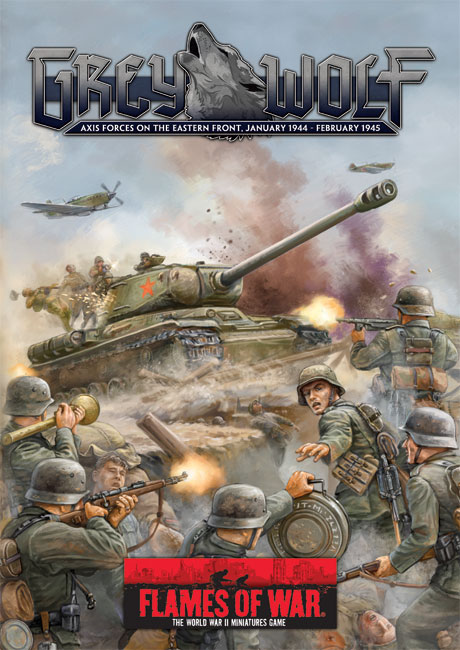 |
Sicherung and Reserves
By Ken Camel
The German Sicherungs and Reserve troops played an important part in the blocking forces and kampfgruppes formed to stop the Red Army's advance during Operation Bagration.
German Military Polizei
German Rear-area Security
From 1939 to 1943, while the German Army spread across Europe, more and more Europeans fell under their control. A number of different formations became responsible for the law enforcement, security, and troop movement throughout the expanding Reich. Some were civilian police units, other were military or SS units.
|
|
These Security Units originated from a variety of backgrounds but all were essentially organized to keep order and discipline within occupied areas. From the military perspective two specific formations were organized to meet two specific army requirements. These were Sicherungs, or Security Divisions and Feldgendarmerie, or Field Police.
|
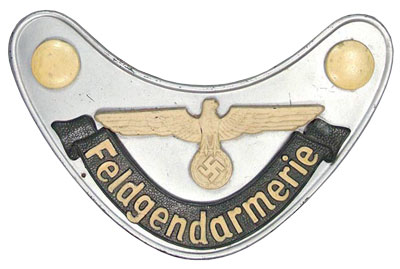 |
Security Missions
Sicherungs divisions were organized exactly like regular infantry divisions without the heavy support weapons. This allowed them to conduct military operations against partisans and provide local security behind the lines for rail and road transportation networks.
Feldgendarmerie were more in the line of a traditional military police unit. Assigned specifically to individual military divisions they provided security, order, and general law enforcement for the military unit to which they were assigned. This would include mapping and controlling march and supply routes for their supported field army. They would also hold and process prisoners of war taken by their combat units. |
Combat Support
Together these forces provided an extremely important support function in keeping the field armies combat ready. The ability to keep supply, transportation, and communication routes open is essential for combat units to remain effective.
Sustained combat operations, whether offensive or defensive, consume enormous quantities of fuel, food, medical supplies, and ammunition. Without secure and continuous supplies, field units would very soon exhaust their capability to fight. |
|
Operation Bagration
However, by 1944, these security units, out of necessity, began to increase their responsibilities. With the German Army placed more and more on the defensive, Sicherungs and Feldgendarmerie found themselves closer and closer to the front lines. This forced them to become front line troops in the case of Sicherungs and battlefield security in the case of Feldgendarmerie.
By the time of Operation Bagration in June 1944, Sicherungs divisions, who had been fighting the partisan efforts in Byelorussia, were thrown into the front lines in a desperate effort to stem the tide of the advancing Soviet Army.
|
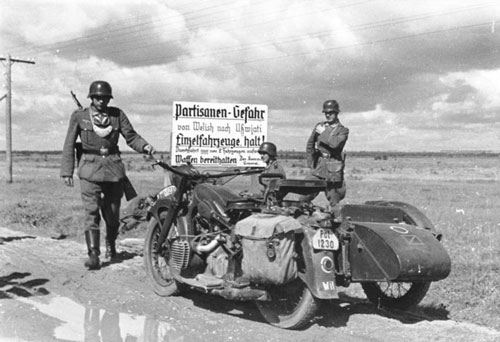 |
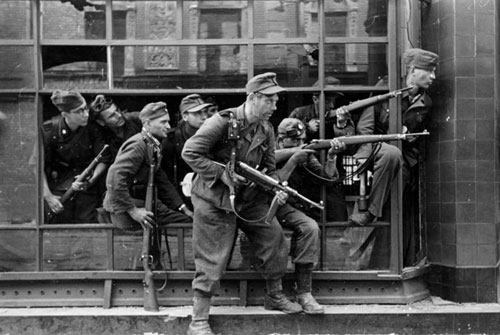 |
They found themselves in Kampfgruppen, or battle groups, with the remnants of infantry, panzergrenadier, or panzer divisions that had been fighting and retreating against the massive Soviet offensive.
Feldgendarmerie also found themselves in a determined effort to halt the retreat. They were ordered to keep the combat troops from fleeing westward away from the Red onslaught. Given the authority to immediately shoot deserters the Feldgendarmerie soon reaped the ire of their soldiers fear and desperation. Referred to as Feldmäuse or field mice by their contemporaries they became despised figures of the collapsing Third Reich.
|
| Neither were trained or equipped for the duties they faced during Operation Bagration. Placed in a no win situation, Sicherungs and Feldgendarmerie became cannon fodder for the Germans and at best, a speed bump for the Soviet Army. |
|
Reserve
Grenadiers
Reserve Regiments were organized like regular Grenadier Regiments without heavy weapon support. They were assigned as Home Guard units in Germany and as such were trained but had never faced combat.
When infantry divisions began to disappear rapidly under Soviet attack the Reserve Regiments were sent east as replacements. Since they arrived with all their weapons and in full regiments they were immediately assigned to supplement depleted infantry divisions.
|
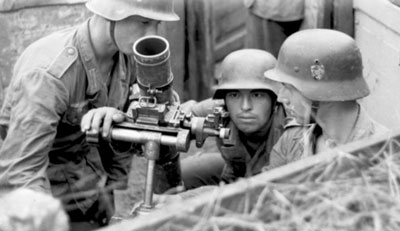 |
Replacements
This would allow an infantry division to keep one regiment of veterans in reserve while having two regiments of replacements in front. They could also integrate remaining veterans within the Reserve Regiments to provide leadership and training.
Though the idea seemed feasible in practice the swift destruction of infantry divisions during Operation Bagration saw the Reserve Regiments hastily assigned under infantry divisions that had been severely depleted. |
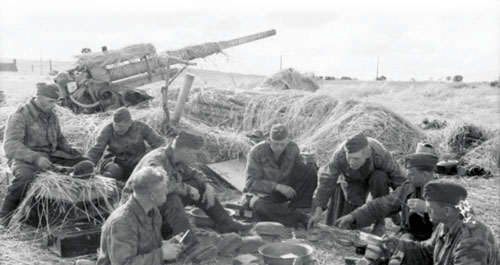 |
Kampfgruppen
In essence, though the infantry divisions retained their support and headquarters units, its combat units were more and more made up of Reserve regiments. Though fully manned, these Reserve Regiments lacked the experience and heavy weapons to stop the advancing Soviet army who had just decimated the regular infantry regiments. |
|
Some Reserve Regiments were thrown into Kampfgruppen by themselves but most were attached to existing Infantry Divisions. If the division survived through the summer of 1944, they formally picked up their Reserve regiments when the division was eventually reconstituted.
Reserve regiments were some of the first reinforcements to reach the eastern front during Operation Bagration. They were quickly integrated into the retreating infantry divisions to form Kampfgruppen in a hasty attempt to halt the Red Army.
|
Last Updated On Wednesday, August 21, 2019 by Wayne at Battlefront
|
|
|